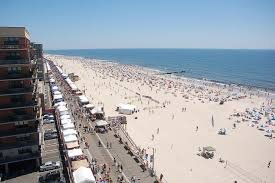About Long Island, NY
About Long Island NY
Long Island, New York, is a unique blend of suburban charm, natural beauty, and urban convenience. Stretching from the bustling boroughs of Brooklyn and Queens to the serene shores of Montauk, the island offers something for everyone. Long Island is renowned for its stunning beaches, including the iconic Jones Beach and the Hamptons, which attract visitors from across the country. Its diverse communities, vibrant downtowns, and lush parks make it an ideal place for families, professionals, and retirees alike.
The area boasts a rich history, reflected in landmarks like Sagamore Hill, the former home of President Theodore Roosevelt, and the Montauk Lighthouse, one of the oldest in the United States. Long Island is also known for its thriving arts and culture scene, with venues like the Nassau Coliseum and the Tilles Center hosting performances and events year-round. Additionally, the North Fork region, famous for its vineyards and wineries, adds to the area’s appeal for food and wine enthusiasts.
Long Island’s proximity to New York City enhances its appeal, offering residents and visitors easy access to world-class dining, shopping, and entertainment. At the same time, it provides a quieter, more laid-back lifestyle compared to the city’s fast pace. Whether you’re exploring its charming villages, enjoying fresh seafood at a waterside restaurant, or soaking in the ocean breeze, Long Island delivers a rich tapestry of experiences that blend the best of urban and coastal living.
Elementary and High Schools
Police Locations
Libraries
Colleges and Universities
Parks & Recreation
Restaurants
Nassau County NY
Nassau County was officially established in 1899, when it was separated from Queens County. However, its roots trace back to the colonial era as part of the English-settled Province of New York. It was initially inhabited by the Lenape Native American tribes before European settlers arrived in the 17th century. The area became part of the Town of Hempstead in the late 1600s.
In the 19th century, Nassau County was predominantly rural, with farming being the main economic activity. The county’s proximity to New York City led to significant urbanization, especially in the early-to-mid 20th century, as the development of railroads and highways made it easier for people to live on Long Island while commuting to the city for work.

Key Facts:
Location: Nassau County is on the western part of Long Island, bordered by Queens to the west and Suffolk County to the east.
County Seat: Mineola
Population: Approximately 1.4 million (as of the 2020 Census)
Notable Communities: Hempstead, Garden City, Long Beach, Rockville Centre, Great Neck
Economy: Nassau County has historically been an economic hub, with a mix of suburban residential areas, commercial districts, and corporate offices. It is home to a number of technology and healthcare companies, as well as many affluent neighborhoods.
Modern Day: Nassau County is now one of the most densely populated counties in the United States, with a diverse population and a range of educational, recreational, and cultural institutions.
Hempstead – Largest Community in the county
Location: Central Nassau County
Population: Approx. 60,000 (village of Hempstead) | ~770,000 (Town of Hempstead)
Overview:
Hempstead is both a village and the name of the largest town in Nassau County. The Town of Hempstead is the most populous town in the U.S., with a diverse mix of residential, commercial, and industrial areas. The village of Hempstead serves as the seat of town government and is located on the southwestern part of the town.

Historically, Hempstead was settled in the 1640s by the English and quickly became an important agricultural and trading center. Over the centuries, it grew into a vibrant suburban community, particularly during the 20th century with the expansion of the Long Island Rail Road and development of nearby highways, making it easily accessible from New York City. Hempstead Village today serves as a hub for cultural and commercial activities, with a diverse population and numerous civic institutions.
Key Features:
Hempstead’s proximity to Long Island’s major transportation networks and its role as a commercial center make it a vital part of Nassau County.
The area includes Hempstead Lake State Park, offering recreational activities.
The Nassau Veterans Memorial Coliseum, located nearby, is a significant sports and entertainment venue.
Long Beach
Location: Southern Nassau County, on the Atlantic Ocean
Population: Approx. 35,000

Overview:
Long Beach, often referred to as the “City by the Sea,” is an iconic beachside community known for its vibrant summer tourism and beautiful coastline. Originally developed as a resort town in the early 20th century, Long Beach was incorporated as a city in 1922. The city saw rapid growth in the mid-1900s, particularly after the construction of the Long Beach Bridge and improvements in transportation to New York City.
Long Beach is a popular destination for beachgoers, surfers, and tourists due to its expansive beachfront, boardwalk, and access to water sports. It also has a rich arts and cultural scene, with various local shops, restaurants, and galleries. Over time, Long Beach has also become a desirable place to live, attracting both commuters and retirees seeking coastal living.
Key Features:
Famous for its Long Beach Boardwalk, stretching along the oceanfront.
Long Beach offers various cultural institutions, including the Long Beach Historical Society and numerous public events.
It has become a year-round community with upscale residential developments and beachfront homes.
Local Weather Updated Daily
BRENTWOOD WEATHERSuffolk County NY
Suffolk County, like Nassau, was originally part of the larger colonial settlement of New York. Established in 1683, it was one of the original counties of New York State. It was initially much larger, extending across all of eastern Long Island. The county was named after the English county of Suffolk. Over time, parts of Suffolk County were split off to form other counties, and it eventually became the territory it is today, covering the eastern two-thirds of Long Island.

Historically, Suffolk County was agricultural, known for its vast farms and production of crops like potatoes, vegetables, and grains. The area also had a strong fishing industry, particularly in places like Montauk. In the 20th century, the development of roadways and the rise of the automobile led to significant suburban growth, particularly after World War II.
Key Facts:
Location: Suffolk County occupies the eastern portion of Long Island, bordered by Nassau County to the west, the Atlantic Ocean to the south, and the Long Island Sound to the north.
County Seat: Riverhead
Population: Approximately 1.5 million (as of the 2020 Census)
Notable Communities: Brookhaven, Islip, Huntington, Smithtown, Southampton
Economy: Historically based on agriculture and fishing, Suffolk County has become more suburbanized, with a diverse economy including healthcare, education, and tourism. The county is home to several large retail centers, vineyards (especially on the North Fork), and beaches that attract millions of tourists each year.
Modern Day: Today, Suffolk County is a blend of suburban communities, affluent areas (especially on the North Shore), and agricultural zones (especially on the East End). The area remains known for its beautiful beaches, parks, and vineyards.
Brookhaven
Location: Central Suffolk County
Population: Approx. 490,000
Brookhaven is the largest town in Suffolk County and covers a vast area, making it the largest town by land size on Long Island. Historically, Brookhaven was established in 1683 and was one of the original towns in New York. Today, it encompasses a wide variety of communities, ranging from suburban villages and hamlets to industrial and coastal areas. Prominent communities within Brookhaven include Patchogue, Shirley, and Mastic Beach.

Brookhaven is known for its diversity in both geography and demographics. It includes both heavily developed suburban communities and rural areas, particularly towards the eastern end of the town. The town is home to several major parks, beaches, and historic sites. It is also a center for education and healthcare, with institutions such as Stony Brook University located within its boundaries.
Key Features:
Fire Island National Seashore and other coastal areas, popular for beachgoers.
The Brookhaven National Laboratory, a world-renowned research facility.
Stony Brook Village, an attractive community known for its historic charm and proximity to the university.
Islip
Location: Western Suffolk County
Population: Approx. 330,000
The Town of Islip is one of the more populous and well-known communities on Long Island, with a strong combination of suburban residential areas and bustling commercial zones. It includes a mix of urbanized areas like Bay Shore and Central Islip, as well as more suburban communities such as West Islip and Islip Terrace.
Historically, Islip was an agricultural region, but it underwent rapid suburbanization during the mid-20th century, spurred by the construction of major highways and proximity to New York City. It is well known for its waterfront areas and parks, as well as its proximity to major transportation hubs like Long Island MacArthur Airport in Ronkonkoma, which serves as a regional airport.
Key Features:
Bay Shore, a bustling village with waterfront restaurants and a ferry terminal for trips to Fire Island.
Robert Moses State Park, which is located on the southern coast, offering beaches and recreational facilities.
Long Island MacArthur Airport, providing regional access for travelers.

